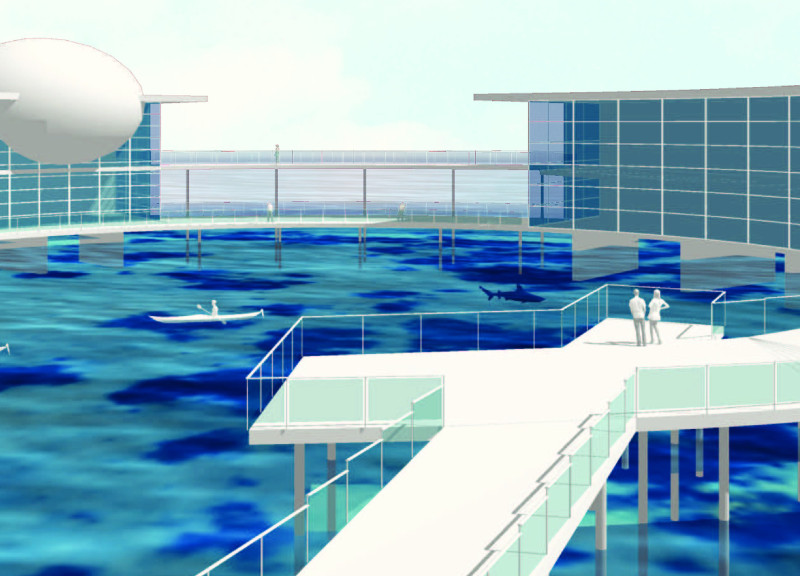5 key facts about this project
The Pavilion for Humanity is located in Pensacola, Florida, and reflects a deep understanding of human experience and interaction with the environment. It embodies themes of love and curiosity about our origins and ties to one another. The layout encourages visitors to engage with both the surrounding nature and the narratives of human evolution. It is a space for reflection, learning, and connection.
Spatial Organization
The Pavilion includes two main building components. The first part consists of three galleries that illustrate the story of mankind. These spaces track the evolution from early life forms to modern exploration beyond our planet. Visitors can choose to walk along a lower path or ascend via a ramp that goes through the tall galleries. This arrangement allows for varied experiences, enabling visitors to engage with the content in multiple ways.
Skylit Transition
At the end of the gallery sequence, a skylit area leads to a large platform meant for contemplation. This transition offers a chance for visitors to pause and think about humanity's connection to the universe. Natural light fills the space while providing a calming atmosphere that enhances reflection. It serves as a moment of stillness within the vibrant flow of the Pavilion.
Functional Integration
The second building features meeting rooms, workshops, a planetarium, and a café, designed to work together effectively. Open spaces create an artificial "beach" and a linear park elevated above the water. These areas foster interaction among visitors, making it a place where people can gather and share ideas. The layout promotes a sense of community, encouraging conversation and collaboration.
Architectural Interaction
The design engages with the surrounding environment, creating a relationship that is key to its purpose. By encouraging connections with the water, sky, and horizon, the Pavilion enhances the experience for visitors. The structure invites exploration while also offering quiet moments through its carefully designed spaces. A notable feature is the artificial lagoon, which visually connects the internal exhibits with the outdoors, inviting visitors to appreciate both their surroundings and the content presented.


















































